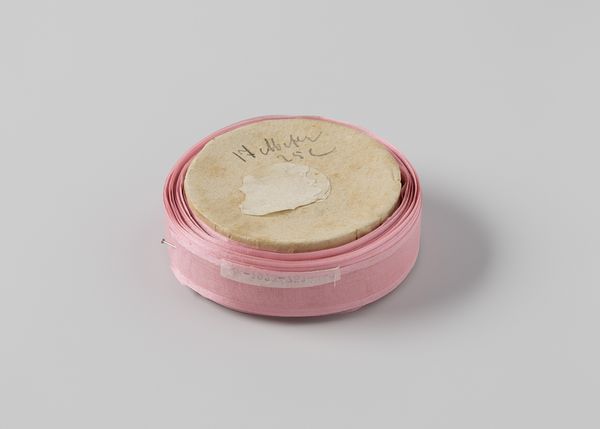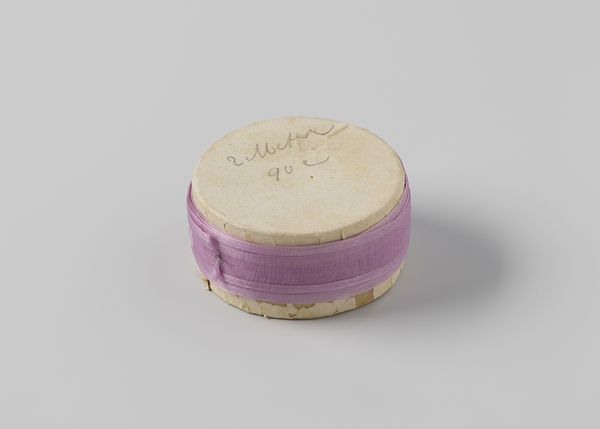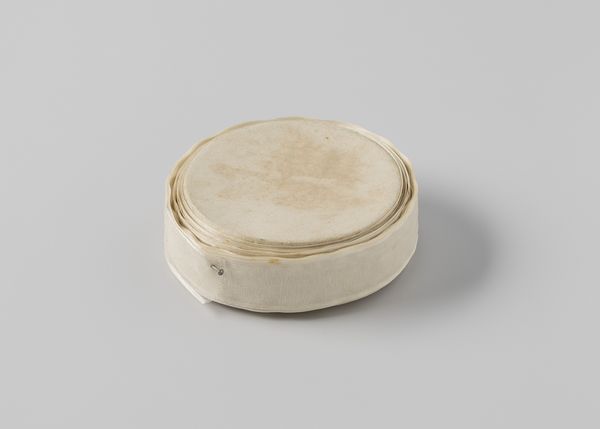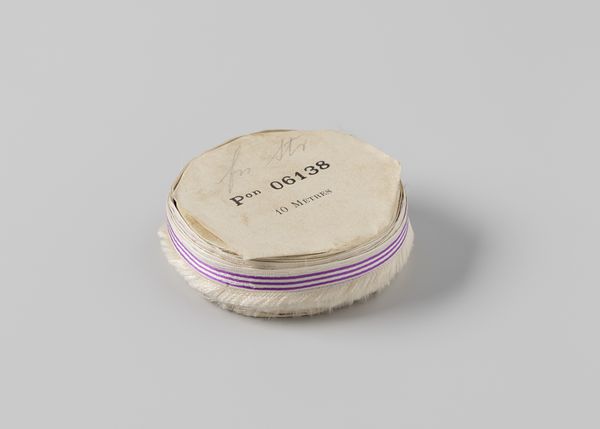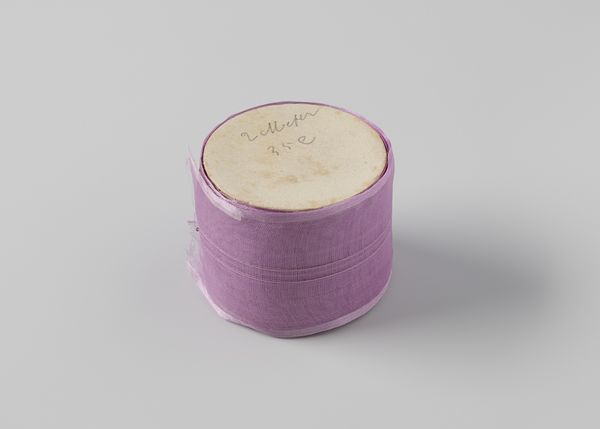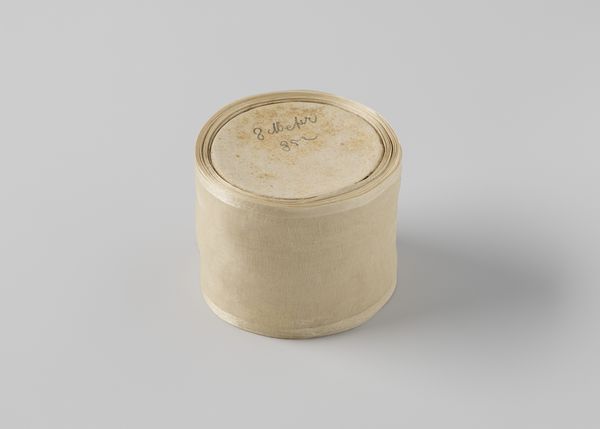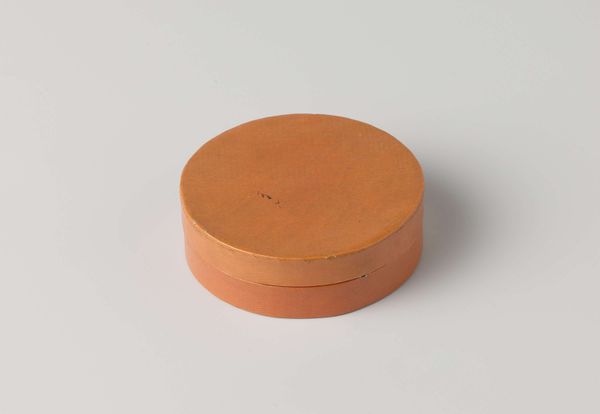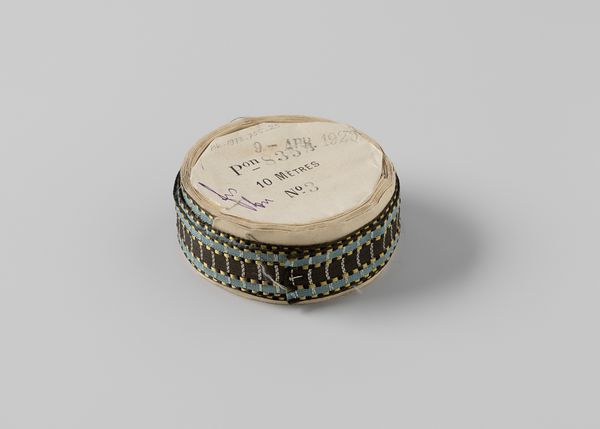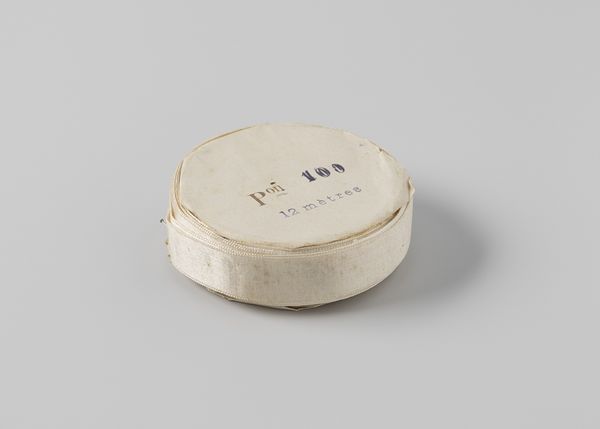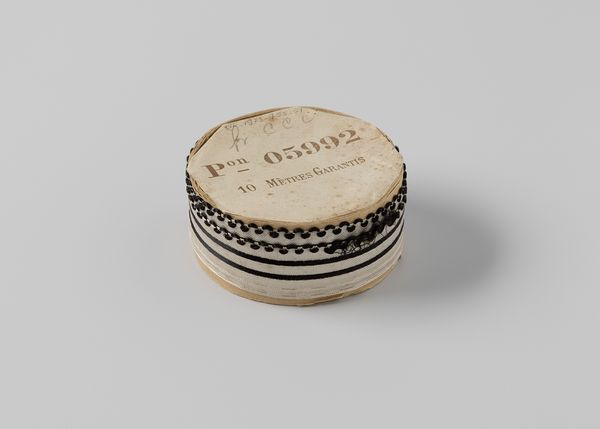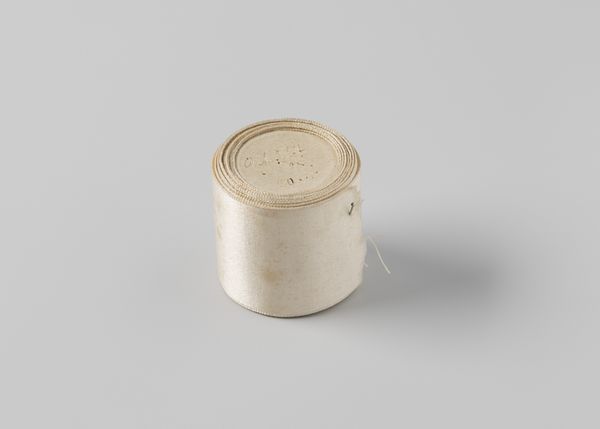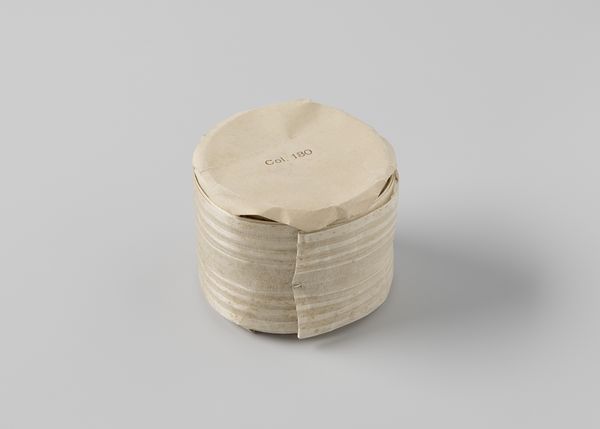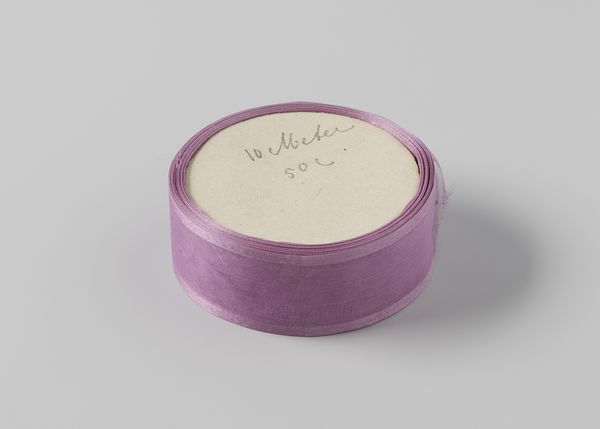
Lint op rol, rose satijn met één zijde afgezet in zwart c. 1890 - 1935
0:00
0:00
gustavschnitzler
Rijksmuseum
photography
#
still-life-photography
#
photography
Dimensions: width 1.6 cm, diameter 5.9 cm, height 2.5 cm
Copyright: Rijks Museum: Open Domain
Curator: This still life, "Lint op rol, rose satijn met één zijde afgezet in zwart," or “Roll of ribbon, pink satin, trimmed on one side with black" was captured between 1890 and 1935, currently residing at the Rijksmuseum. What's your immediate impression? Editor: Austere, yet charming. The muted pink of the satin juxtaposed against the black trim suggests a sense of refined elegance, almost melancholic. Curator: Indeed. Looking at this piece by an unknown photographer, one is immediately drawn to the composition. Its success really lies in its delicate exploration of textures – the soft satin, the rougher roll itself, and the sharp contrast of the black trim all playing a part. I think, considering its probable time of creation, there may be a strong commentary on gender, particularly the feminine associations with decorative items like ribbon at the turn of the century. Editor: That's a compelling perspective. For me, this work speaks to the evolution of photography as a legitimate artistic medium. We can really start to consider photographic practices and modes of display during the rise of the industrial age. Consider how items like ribbons were produced and marketed. How might we tie this piece back to a rise in mass consumption and its cultural impact? Curator: Absolutely, the availability and increased accessibility of such materials because of mass production certainly affected popular perceptions of the home and femininity, making previously inaccessible decorations available to the bourgeois classes, thereby driving increased consumption of such goods and services. Editor: This photography, a memento almost, transforms this mundane ribbon roll into an iconic signifier of its historical and social context. It highlights the evolving relationship between commercial production and photography as a means of recording and transforming everyday objects into powerful social commentary. Curator: Ultimately, viewing it through the lens of material culture gives us some fascinating details. We find not just the visual representation of an object, but also a trace of history itself. Editor: Agreed, reflecting on our talk, what remains are these persistent questions of photographic practices, societal memory and consumer transformation.
Comments
No comments
Be the first to comment and join the conversation on the ultimate creative platform.
